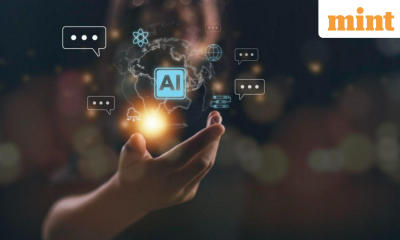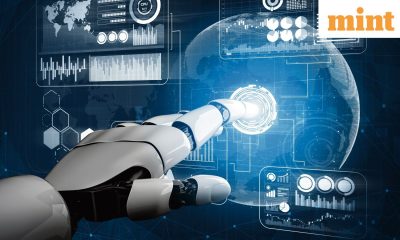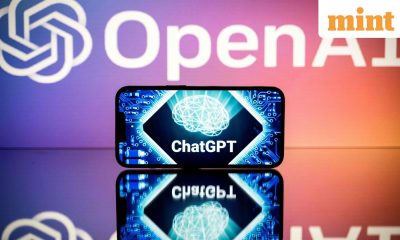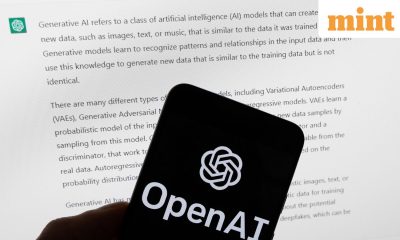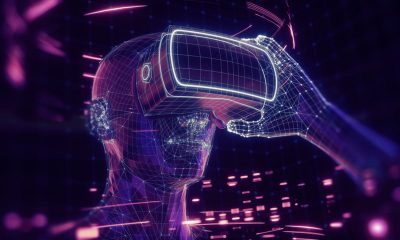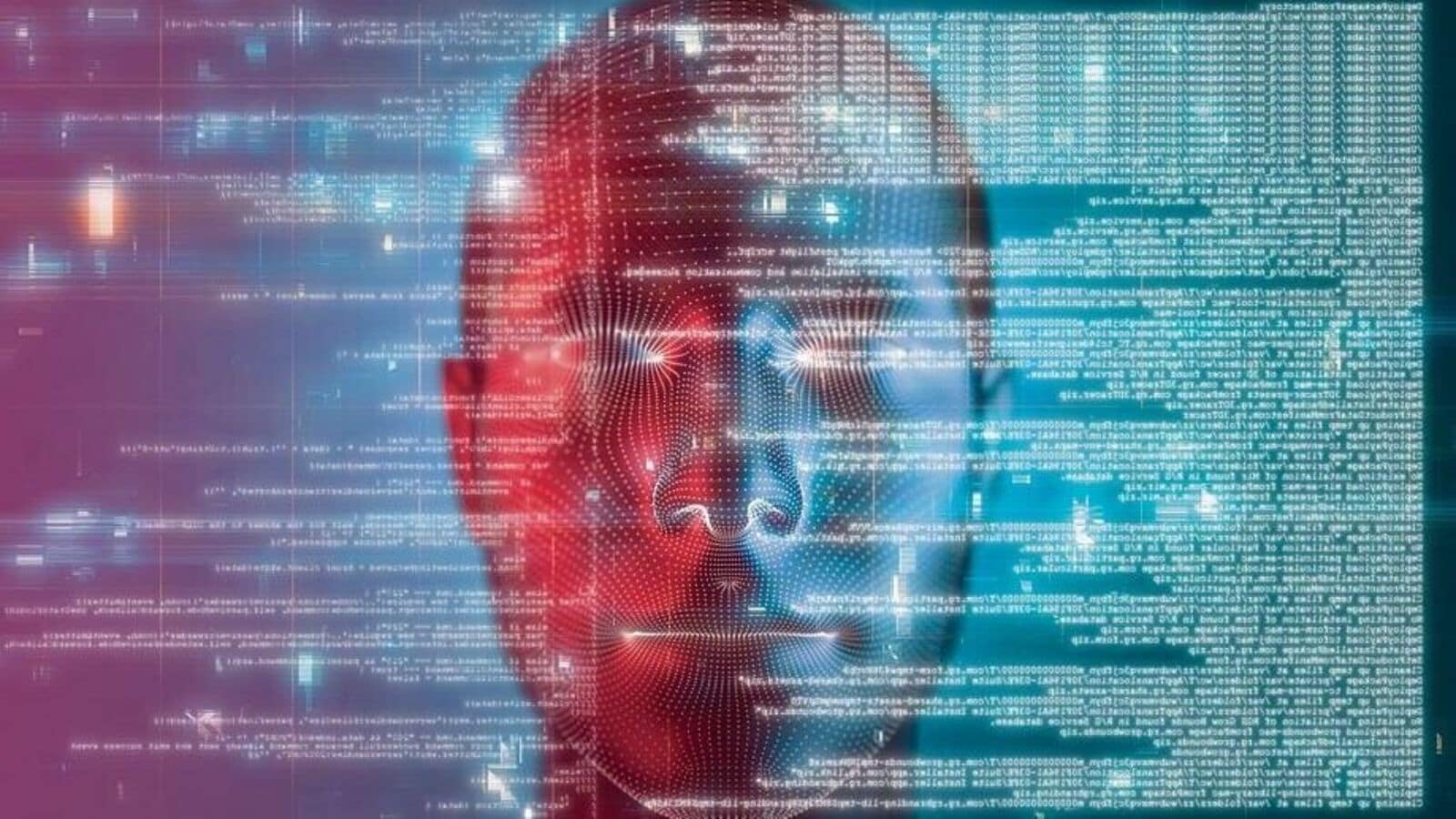
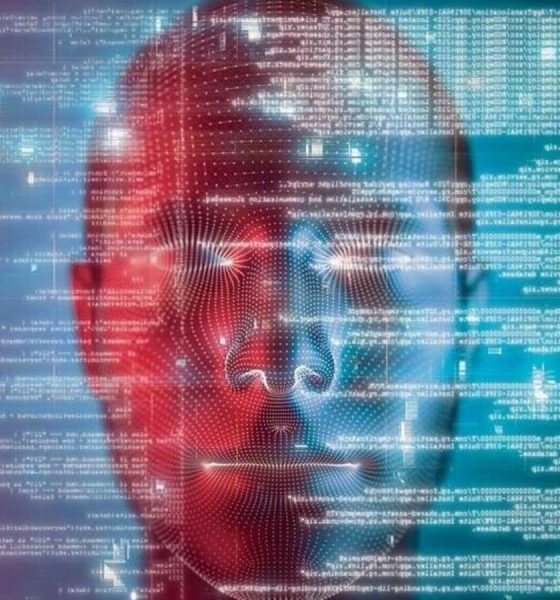
Metaverse
The rise of ‘agentic AI’: Why data scientists and software developers should be worried – Crypto News
Here’s a case in point. Many clients of Northwest Registered Agent LLC, a company that provides compliance filing and other business services, have been using an AI-powered agent, AI-RAH, for the past two years. This AI agent handles tasks such as forming limited liability companies (LLCs), corporations, and non-profits. It manages document categorization, scanning, annual report deadline notifications, and even resolves minor stakeholder disputes without human intervention.
Late November, US-based software company OtoCo Inc. announced on X that one of its AI agents had independently decided to create an LLC in Delaware. According to OtoCo, such LLCs can provide legal protection for companies engaging in activities like deploying code, operating Tesla robo-taxis, or performing household tasks.
Closer to home, Deepinder Goyal, founder and CEO of Zomato (now Eternal), released a homegrown AI agent called Nugget for businesses this month. According to a 17 February post on X, Nugget was built over three years as an internal tool and powers more than 15 million support interactions per month for Zomato, Blinkit and Hyperpure. “We’re now opening it up to businesses worldwide—90% of companies who’ve seen Nugget have signed up,” Goyal said.
Meanwhile, Reliance Jio-backed industrial robotics and warehouse automation company, Addverb, has even embodied an autonomous AI agent in a robot. The company describes its humanoid, Trakr, as an “advanced AI agent capable of processing vast volumes of multi-modal data from vision, audio, and touch inputs”. According to Sangeet Kumar, co-founder and CEO of Addverb, the goal is to eliminate ‘3D jobs’—those that are Dull, Dirty, and Dangerous—Trakr, he claims, can perform complex tasks with human-like dexterity and strength.
Agentic AI, in short, will change our world of work forever. Here’s our explainer on its possibilities and threats.
So, how are AI agents different?
AI agents, often referred to as ‘Agentic AI’ systems, are models capable of making decisions and taking actions to achieve specific goals without human intervention, making them truly autonomous. Think of a driverless car that adapts to traffic conditions, a smart home assistant that learns your habits, or an AI-driven financial bot that analyses market trends and makes stock trades. Other examples include AI-powered automation in finance and healthcare, policy claims processing, and software development.
View Full Image
The distinction between a non-agentic and an agentic system lies in the level of autonomy and decision-making capabilities. For instance, a non-agentic workflow will respond only to specific inputs or commands, follow pre-defined rules and procedures, and need constant human intervention for most decision-making. A basic chatbot, for instance, will only respond with pre-programmed, scripted answers to specific questions.
An agentic workflow, on the other hand, can initiate actions and take its own decisions. Consider an AI trading system that analyses market trends, makes investment decisions, and adjusts its strategy based on performance.
How do agentic AI systems work?
Agentic AI first processes inputs (text, voice, or images) using natural language processing (NLP) or computer vision like Skit.ai, which transcribes and understands customer calls. Next, they analyse data to determine actions. E42’s HR automation AI, for instance, decides leave approvals based on company policy. These systems then execute tasks by interacting with external tools. Yellow.ai agents can not only chat but also process refunds or schedule follow-ups.
AI agents also learn continuously, refining responses and actions over time, as seen with Uniphore, which improves customer service by analysing call interactions. Unlike large language model-based chatbots, agentic AI integrates with business software such as customer relationship management (CRM) and enterprise resource planning (ERP) systems and handles multi-step workflows such as processing insurance claims or automating supply chains.
What’s the secret to efficiency?
AI agents are becoming smarter and more efficient with Generative AI (GenAI) models that help them understand, generate, and respond to users in a more natural manner. The reason: unlike traditional AI that follows fixed rules, GenAI enables these agents to learn from data, predict needs, and provide personalized solutions. This means that AI agentic systems go beyond chatbots by autonomously making decisions and executing tasks.
Imagine a customer asking: “I received my order, but the shirt size is wrong. What should I do?” An agentic system classifies this as a return/exchange query and decides on the appropriate action. Generative AI may create a natural language response: “I’m sorry to hear about the sizing issue with your shirt. I’d be happy to help you with an exchange. Can you please provide your order number, and I’ll guide you through the process?”
As the conversation progresses, the AI uses its decision-making capabilities to determine the best course of action (e.g., initiating a return, offering a discount) while using generative AI to maintain a natural, empathetic conversation.
What is Big Tech upto?
Agents powered by Nvidia NIM enable tasks like content summarization, fraud detection, and workflow automation. And similar to AI tools like Microsoft’s co-pilot and Google’s NotebookLM, Nvidia’s AI Blueprints can transform PDFs into podcasts or manage video content efficiently, offering tools for media and enterprise applications.
Other than big tech companies, many Indian companies—such as Tata Consultancy Services, Infosys, Wipro, Tech Mahindra, and Zoho—have created AI platforms with autonomous decision-making capabilities for IT operations and business process optimization.
In the field of robotic process automation (RPA), AI-powered bots from UiPath and Automation Anywhere automate repetitive tasks in finance and healthcare, such as data entry, invoice processing, and customer service interactions. Deeptech startups, including Reliance-backed Haptik, Niki.ai, and Gnani AI, offer conversational AI solutions with agentic capabilities for customer service. Niramai, for instance, has developed an AI system for autonomous breast cancer screening, while Manthan provides AI-powered retail analytics solutions for inventory management and personalized marketing.

View Full Image
What do surveys suggest?
By 2025, 88% of enterprises are expected to integrate synchronous AI agents (those that operate in real-time) into their operations in some capacity, according to a January 2025 report by Avasant. However, only 10% will scale the deployment of these agents across more than 40% of their workflows, with a focus on process automation and predictive insights.
In customer service alone, AI agents are projected to save businesses over $80 billion annually by 2026 through automation, according to Gartner.
What could be the impact on routine human jobs?
Agentic AI’s integration into organizations will reshape hiring practices and workplace dynamics, creating both challenges and opportunities for the future of employment.
According to Jayanth N. Kolla, founder and partner of Convergence Catalyst, a deeptech advisory firm, a “fair portion of work” of different professionals such as paralegals, copywriters and content creators in marketing and advertising agencies, researchers and analysts, customer support executives and telemarketers, is already being outsourced to AI, especially GenAI, in recent years. “It is estimated that 20-25% of all software around the world will be developed by Gen AI,” he added.
For one, it’s clear that AI agents significantly increase productivity and operational efficiency. They also do not get tired, can scale operations quickly, and handle large volumes of tasks effortlessly and speedily.
These very features give autonomous systems the potential to replace roles traditionally performed by humans, which can lead to job losses, creating socio-economic challenges. OpenAI CEO Sam Altam says that AI agents will “eventually feel like virtual co-workers”.
In a 10 February blog, he cites the example of a software engineering agent that “will eventually be capable of doing most things a software engineer, with a few years of experience, could do, for tasks up to a couple of days long”.
“It will not have the biggest new ideas; it will require lots of human supervision and direction, and it will be great at some things but surprisingly bad at others. Still, imagine it as a real-but-relatively-junior virtual coworker. Now imagine 1,000 of them. Or 1 million of them. Now imagine such agents in every field of knowledge work,” he said.

View Full Image
Likewise, Jensen Huang, co-founder and chief executive officer of Nvidia, predicts that the information technology (IT) department of every company is going to be the human resources (HR) department of AI agents in the future.
As AI advances, balancing human expertise with AI efficiency will define the future of tech teams and HR management, according to Abhinav Aggarwal, co-founder and CEO of Fluid AI, a company that offers GenAI solutions.
“As AI automates repetitive tasks, demand for certain positions, such as data scientists and software developers, may diminish. This shift does not indicate a reduction in workforce needs; rather, it suggests a transition toward roles that require emotional intelligence, creativity, and strategic thinking—skills that AI cannot replicate,” he said.
What happens to the HR department?
The coexistence of AI and human workers can enhance efficiency but requires a reevaluation of job roles, according to Sunil Chemankotil, country manager of HR solutions company Adecco India. “While there is conviction that AI will lead to net job additions due to its rapid learning capabilities, the reality is more nuanced. Organizations must rethink their onboarding and talent strategies as AI agents are increasingly integrated alongside human employees. This dual onboarding raises questions about the roles of HR and IT. If IT departments manage AI agents while HR focuses on human talent, a new hybrid function may emerge to facilitate collaboration between both entities,” he added.
AI, according to Chemankotil of Adecco India, can also contribute to less rigid top-down structures, enabling more purpose-led and objective-driven decision-making. “This evolution may lead organizations to transition from layered, pyramid structures to flatter, decentralized organizations where decision-making is more agile and collaborative. HR departments must adapt to support this new landscape, focusing on cultivating environments that foster human-AI collaboration.”
Organizations must rethink onboarding and talent strategies as AI agents are increasingly integrated alongside human employees.
— Sunil Chemankotil
How are engineers adapting?
AI’s problem-solving ability continues to improve, making coding more efficient. According to Aggarwal of Fluid AI, traditional tech teams—backend, frontend, and architects—are adapting to AI’s growing role. AI drafts plans, writes code, and human coders review the output. This accelerates development, but architectural decision-making remains a bottleneck.
He believes that organizations relying on outsourced coding may shift to AI, since AI coding is significantly cheaper and faster than human coding. “Tasks that took hours now take minutes, though human oversight remains necessary,” he pointed out. This trend is pushing companies to hire higher-level AI developers.
So, what are the risks?
AI agents still struggle with multi-step reasoning and long-term memory, often making errors in complex tasks. For instance, an AI booking a vacation might secure a flight but fail to align hotel check-in times, leading to inconvenience. Their autonomy also comes at a high computational cost, with such systems requiring substantial processing power, making them expensive for smaller businesses.
Ethical and security risks add to the concerns, as these agents could be weaponized for phishing, misinformation, or cyberattacks. Trust remains another hurdle—AI-driven financial trading or healthcare decisions could misinterpret data, leading to serious consequences. Moreover, as AI agents continue to evolve, governments must step in with regulations to ensure accountability, or we may see a rise in lawsuits over flawed AI-driven decisions.
“IT and business teams can no longer afford to operate in silos—AI is forcing a paradigm shift,” corroborated Akshay Khanna, managing partner at advisory firm Avasant. He asserts that the age of agentic AI demands a unified approach, making an AI governance board not just beneficial but essential.
“It’s no longer just about setting governance and guardrails; it’s about strategic execution, use case prioritization and rethinking workforce deployment,” he said. Autonomous processes with human oversight require HR and IT alignment from day one, he added.
-

 Cryptocurrency1 week ago
Cryptocurrency1 week agoIlluminating progress: Is a $140K income ‘poor’? – Crypto News
-
Technology1 week ago
Crypto Lawyer Bill Morgan Praises Ripple’s Multi-Chain Strategy as RLUSD Hits $1.1B – Crypto News
-

 Technology1 week ago
Technology1 week agoSamsung Galaxy S25 Ultra 5G for under ₹80,000 on Flipkart? Here’s how the deal works – Crypto News
-

 Blockchain7 days ago
Blockchain7 days agoAnalyst Reveals What You Should Look Out For – Crypto News
-
others7 days ago
Breaking: Labor Department Cancels October PPI Inflation Report Ahead of FOMC Meeting – Crypto News
-

 Blockchain6 days ago
Blockchain6 days agoStripe and Paradigm Open Tempo Blockchain Project to Public – Crypto News
-

 Technology1 week ago
Technology1 week agoWorking on a screen all day? These 8 LED monitors in Dec 2025 are kinder on your eyes – Crypto News
-

 others1 week ago
others1 week agoGold holds strong at $4,200 as Fed-cut anticipation builds – Crypto News
-

 Cryptocurrency7 days ago
Cryptocurrency7 days agoArgentina moves to reshape crypto rules as banks prepare for Bitcoin services – Crypto News
-
others1 week ago
Bitcoin Price Forecast as BlackRock Sends $125M in BTC to Coinbase — Is a Crash Inevitable? – Crypto News
-
others1 week ago
Morgan Stanley Turns Bullish, Says Fed Will Cut Rates by 25bps This Month – Crypto News
-

 Cryptocurrency1 week ago
Cryptocurrency1 week agoFlorida Appeals Court Revives $80M Bitcoin Theft – Crypto News
-

 Blockchain1 week ago
Blockchain1 week agoBitcoin Buries The Tulip Myth After 17 Years: Balchunas – Crypto News
-

 Cryptocurrency1 week ago
Cryptocurrency1 week agoCrypto Holiday Gift Guide 2025 – Crypto News
-

 Blockchain5 days ago
Blockchain5 days agoBMW Helps JPMorgan Drive Blockchain-Based FX Payments – Crypto News
-
others1 week ago
XRP Price Prediction As Spot ETF Inflows Near $1 Billion: What’s Next? – Crypto News
-

 others1 week ago
others1 week agoThe rally to 7120 continues – Crypto News
-

 Cryptocurrency1 week ago
Cryptocurrency1 week agoWhy Ethereum strengthens despite whale selling – Inside Asia premium twist – Crypto News
-

 others1 week ago
others1 week agoNasdaq futures hold key structure as price compresses toward major resistance zones – Crypto News
-

 others1 week ago
others1 week agoNasdaq futures hold key structure as price compresses toward major resistance zones – Crypto News
-

 Technology1 week ago
Technology1 week agoCloudflare Resolved Services Issues Caused by Software Update – Crypto News
-
Technology1 week ago
Solana Price Outlook: Reversal at Key Support Could Lead to $150 Target – Crypto News
-

 others1 week ago
others1 week agoCanadian Dollar soars after upbeat labor report – Crypto News
-

 others1 week ago
others1 week agoStocks survive PCE and consumer data – FOMC too? – Crypto News
-
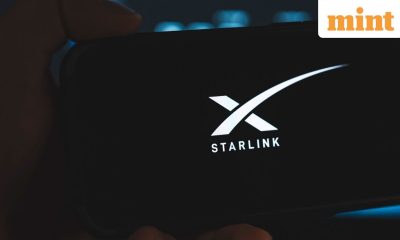
 Technology1 week ago
Technology1 week agoStarlink India pricing revealed: How much does monthly plan cost and what are its benefits? – Crypto News
-
others6 days ago
Bitcoin, Ethereum, XRP, Solana Rally Ahead of Fed Rate-Cut Decision – Crypto News
-
others6 days ago
HYPE Price Drops 7% as $2.2M Shift and 10M Token Unlocks Stir Fear — What’s Next? – Crypto News
-
others1 week ago
Colombia Consumer Price Index (YoY) below forecasts (5.45%) in November: Actual (5.3%) – Crypto News
-
Technology1 week ago
Bitcoin Stalls Ahead of FOMC as Analyst Van de Poppe Sees No Break Until Tuesday – Crypto News
-

 Technology1 week ago
Technology1 week agoFrom security camera to gaming hub: 6 Easy tricks to make your old smartphone genuinely useful again – Crypto News
-

 Cryptocurrency1 week ago
Cryptocurrency1 week agoGlassnode report reveals Bitcoin’s growing stability amid ETF activity and RWA expansion – Crypto News
-
others1 week ago
$1.3T BPCE To Roll Out Bitcoin, Ethereum and Solana Trading For Clients – Crypto News
-

 others1 week ago
others1 week agoAussie eyes YTD high after channel breakout – Crypto News
-

 Cryptocurrency1 week ago
Cryptocurrency1 week agoThursday links: Prediction markets, agent hackers, quantum risks – Crypto News
-

 Business6 days ago
Business6 days agoBezos to Advise Security and Resiliency Initiative – Crypto News
-

 Cryptocurrency1 week ago
Cryptocurrency1 week agoSolana tokens see gains amidst weeklong crypto slump – Crypto News
-

 Metaverse1 week ago
Metaverse1 week agoGoogle’s new AI tech unmasks fake images. – Crypto News
-

 Cryptocurrency1 week ago
Cryptocurrency1 week agoBitcoin whales freeze – Is BTC drifting toward $86.5K danger zone? – Crypto News
-
Business1 week ago
HashStaking Review: The Smarter Way to Grow Your Crypto in 2025 – Crypto News
-
Technology1 week ago
Peter Brandt Hints at Further Downside for Bitcoin After Brief Rebound – Crypto News
-
Business1 week ago
Why is the LUNC Price Up 70% Despite the Crypto Market’s Decline? – Crypto News
-
others1 week ago
United States Consumer Credit Change came in at $9.18B, below expectations ($10.5B) in October – Crypto News
-

 Technology1 week ago
Technology1 week agoSamsung’s Galaxy S26 range leaks with circular cameras and Android 16 upgrade: What to expect – Crypto News
-
others1 week ago
Dogecoin Price Gears Up for a $0.20 Breakout as Inverse H&S Takes Shape – Crypto News
-

 Blockchain1 week ago
Blockchain1 week agoBitcoin Market Records 21% Crash In November Spot Trading Volume – Crypto News
-
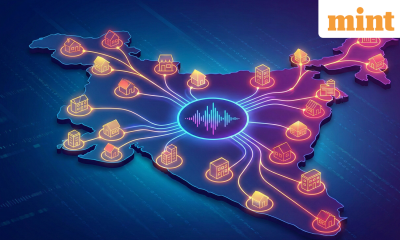
 Technology1 week ago
Technology1 week agoTier 2 and Tier 3 cities drive over 90% of engagement on audio social platforms in India, says report – Crypto News
-
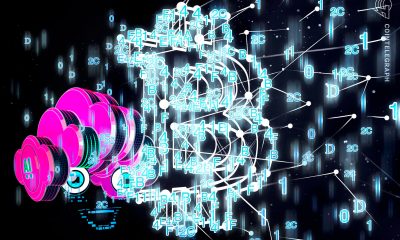
 Blockchain1 week ago
Blockchain1 week agoBittensor Set for First TAO Halving on Dec. 14 – Crypto News
-

 others1 week ago
others1 week agoNasdaq futures hold key structure as price compresses toward major resistance zones – Crypto News
-
others1 week ago
China Exports (YoY) came in at 5.7%, above forecasts (3.8%) in November – Crypto News
-

 Blockchain1 week ago
Blockchain1 week agoSolana (SOL) Recovery Momentum Hinges on Price Closing Firmly Above $140 – Crypto News

